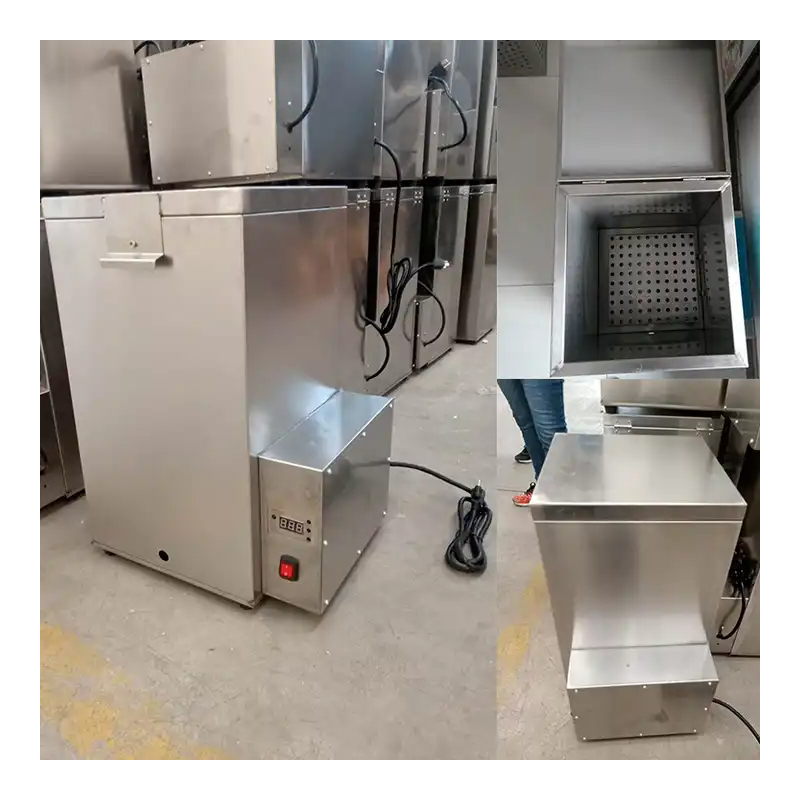feed pelletizing machine
Dec . 20, 2024 18:50 Back to list
feed pelletizing machine
The Importance of Feed Pelletizing Machines in Modern Agriculture
In the ever-evolving landscape of agricultural practices, the efficiency and sustainability of livestock feed production are becoming increasingly critical. Among the various innovations that have transformed this sector, feed pelletizing machines stand out as a pivotal technology. These machines not only streamline the production of animal feed but also improve its nutritional value, making them indispensable in modern farming operations.
What is a Feed Pelletizing Machine?
A feed pelletizing machine is a specialized piece of equipment designed to compress feed ingredients into pellets. This process involves grinding raw materials into a fine powder, mixing them with appropriate additives, conditioning the mixture with steam or heat, and then forcing it through a die to create pellets of uniform size. The end product is a highly nutritious feed that can be easily handled, transported, and consumed by livestock.
Advantages of Feed Pelletizing
1. Improved Nutritional Value Pelleting feed significantly enhances its digestibility. The high temperature and pressure involved in the pelleting process help break down the feed particles, allowing livestock to absorb nutrients more efficiently. This increased digestibility leads to better growth rates and overall health in animals.
2. Reduction of Waste Feed pellets are compact and dense, reducing waste associated with feed spillage and sorting. This is particularly beneficial in large-scale operations where minimizing waste directly influences cost efficiency and profitability.
3. Enhanced Feed Safety The pelleting process can eliminate harmful pathogens and microbes in feed ingredients, ensuring that the final product is safer for animal consumption. This contributes to biosecurity in livestock operations, reducing the risk of disease transmission.
4. Easier Handling and Storage Pellets are easier to transport and store compared to bulk feed ingredients. Their compact nature requires less storage space and makes them easier to distribute, resulting in lower transportation costs and improved logistics.
feed pelletizing machine

5. Customization Feed pelletizing machines allow for the easy incorporation of various additives and supplements into the feed. This flexibility enables farmers to tailor their feed formulations to meet the specific dietary needs of their livestock, optimizing health and productivity.
Types of Feed Pelletizing Machines
Feed pelletizing machines come in various sizes and configurations, catering to different production scales.
1. Small-Scale Feed Pellet Mills These are designed for small farms and homesteaders who want to produce their own feed. They are typically user-friendly, easy to maintain, and suitable for producing a few hundred kilograms of pellets per hour.
2. Commercial Feed Pellet Mills These larger machines are designed for significant production outputs and are equipped with advanced features for enhanced efficiency. They can handle a wide range of raw materials and often come with automated controls for precise operation.
3. Mobile Feed Pelletizing Units Innovations in feed production technology have led to the development of mobile units that can be transported to various locations. These units allow farmers to produce feed on-site, reducing transportation costs and ensuring freshness.
Conclusion
The role of feed pelletizing machines in modern agriculture cannot be overstated. As the demand for efficient and sustainable livestock production continues to grow, these machines provide a practical solution to meet nutritional needs while optimizing resources. Whether for small-scale farmers or large commercial operations, the benefits of feed pelletizing are clear. Investing in this technology is not just a step toward improved productivity but also a commitment to the health and well-being of livestock and the sustainability of farming practices.
Ultimately, as we look toward the future of agriculture, embracing innovations like feed pelletizing machines will be crucial in meeting global food demands, enhancing animal welfare, and supporting the livelihoods of farmers. As technology progresses, these machines will continue to evolve, bringing even greater efficiencies and sustainability to feed production processes.
-
Automatic Feeding Line System - Anping Yize | Efficiency&Durability
NewsJul.29,2025
-
Automatic Feeding Line System - Anping Yize|Poultry Efficiency&Durability
NewsJul.29,2025
-
Automatic Feeding Line System-Anping County Yize Metal Products Co., Ltd.|Durable PP Material&Easy Maintenance
NewsJul.29,2025
-
Automatic Feeding Line System-Pan Feeder Nipple Drinker|Anping County Yize Metal Products Co., Ltd.
NewsJul.29,2025
-
Hot Sale 24 & 18 Door Rabbit Cages - Premium Breeding Solutions
NewsJul.25,2025
-
Automatic Feeding Line System Pan Feeder Nipple Drinker - Anping County Yize Metal Products Co., Ltd.
NewsJul.21,2025






